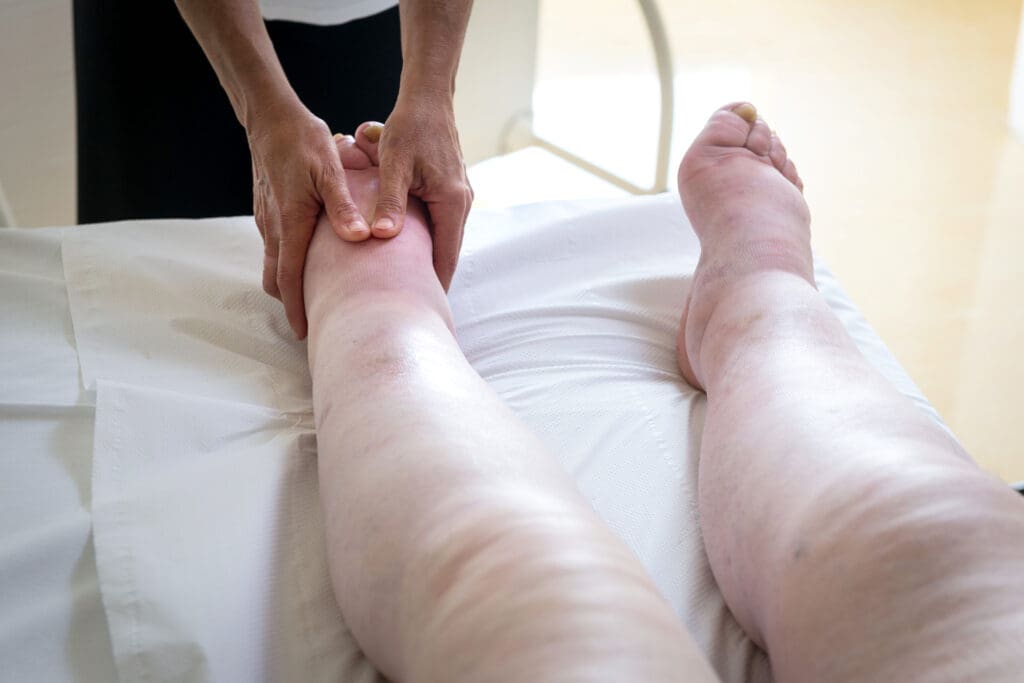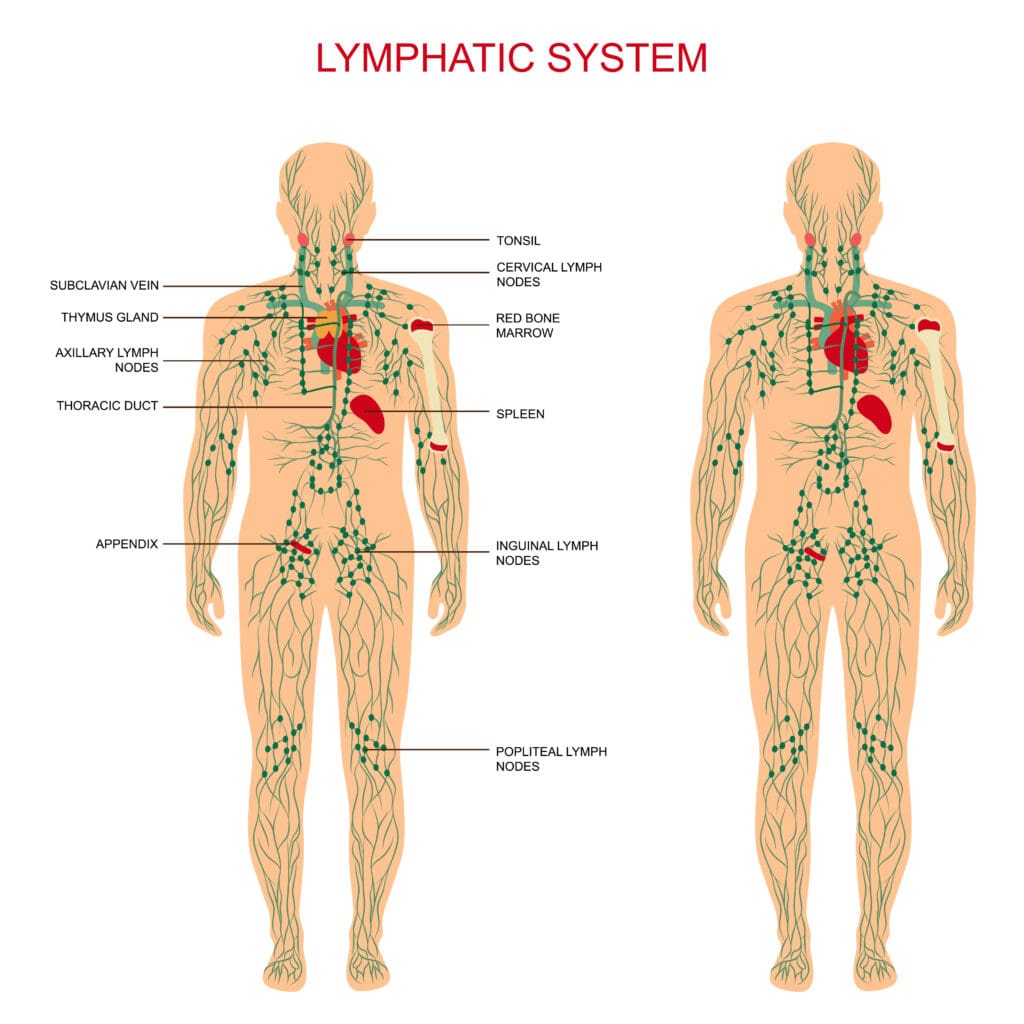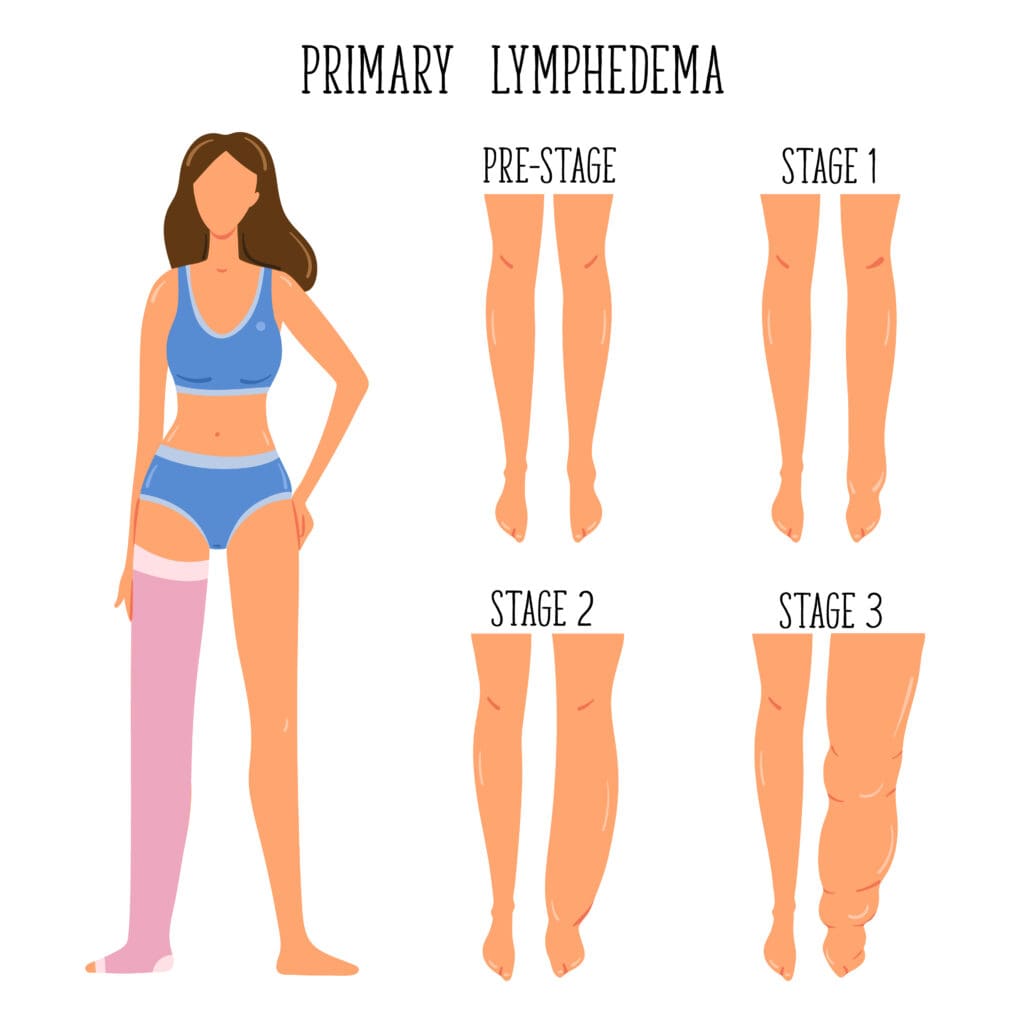How Can Physical Therapy Treat Lymphedema?
October is Breast Cancer Awareness Month! One of the most common and unwanted side effects of breast cancer (and cancer in general) is lymphedema, which is swelling caused by damage to the lymphatic system.

What is the Lymphatic System
The role of the lymphatic system is to maintain fluid levels in the body by absorbing excess fluid from the skin and subcutaneous tissues and transporting it back into the bloodstream. It also monitors and destroys harmful invaders like bacteria and viruses in the body. Basically, it’s like a system of streams throughout your body that transport fluid and waste products. Just like a normal stream, if there’s a disruption, it causes problems.
The lymphatic system consists of the lymph nodes, spleen, thymus gland, and tonsils.

The Importance of the Lymph Nodes
The lymph nodes are the filtering stations of the body and are located all over to respond to bacteria, toxins, and dead cells. They are responsible for fighting infections and enhancing the body’s immune capabilities. Lymph nodes are in different regions of the body:
- Inguinal (groin)
- Axillary (armpit)
- Supraclavicular (above the clavicle)
- Epitrochlear (above the elbow)
- Cervical (neck)
Lymphedema occurs when the lymph nodes are damaged or removed and unable to drain properly. The axillary lymph nodes are most commonly affected by breast cancer and may be removed during surgery or damaged during radiation treatment, which can cause a disruption in filtration of fluid resulting in upper extremity lymphedema. This is called secondary lymphedema.
Breast Cancer and Lymphedema
When the lymph nodes are damaged or removed, the flow is disrupted, and fluid often builds up. This will cause swelling in the area of the disruption.

Some other symptoms of lymphedema include:
- Feeling of fullness, heaviness, or tightness in the arm, chest or, armpit
- Clothing doesn’t fit as normal
- Aching or new pain
- Trouble bending or moving a joint
- Thickening of or changes in the skin
- Weakness
If you experience these symptoms, see a healthcare provider. There is no test for lymphedema, but your healthcare provider will do a thorough medical history and physical exam to diagnose lymphedema.
Lymphedema can happen at any time, but once a person has lymph nodes that are damaged or removed, they are at a higher risk of experiencing lymphedema. While it’s not curable, it is manageable.
How Physical Therapy Can Help
A physical therapist who treats lymphedema can help a patient to:
- Reduce pain, swelling, and other symptoms
- Regain function
- Improve quality of life
Treatment consists of two phases.

Phase 1 consists of:
- Manual lymphatic drainage
- Multi-layer short stretch compression bandaging
- Lymphatic exercise
- Skin care
- Education in lymphedema self-management
Phase 2 consists of a self-management program with education on:
- Self-lymph drainage
- Home exercises
- Proper skincare regimen
- Compression bandaging on garments and bandage alternatives
If you or are a loved one are experiencing lymphedema, don’t wait. This blog post was written with the help of Jennifer Powers, physical therapist at PTSMC Fairfield who treats lymphedema. If you would like to learn more or start PT, give our Fairfield clinic a call!
